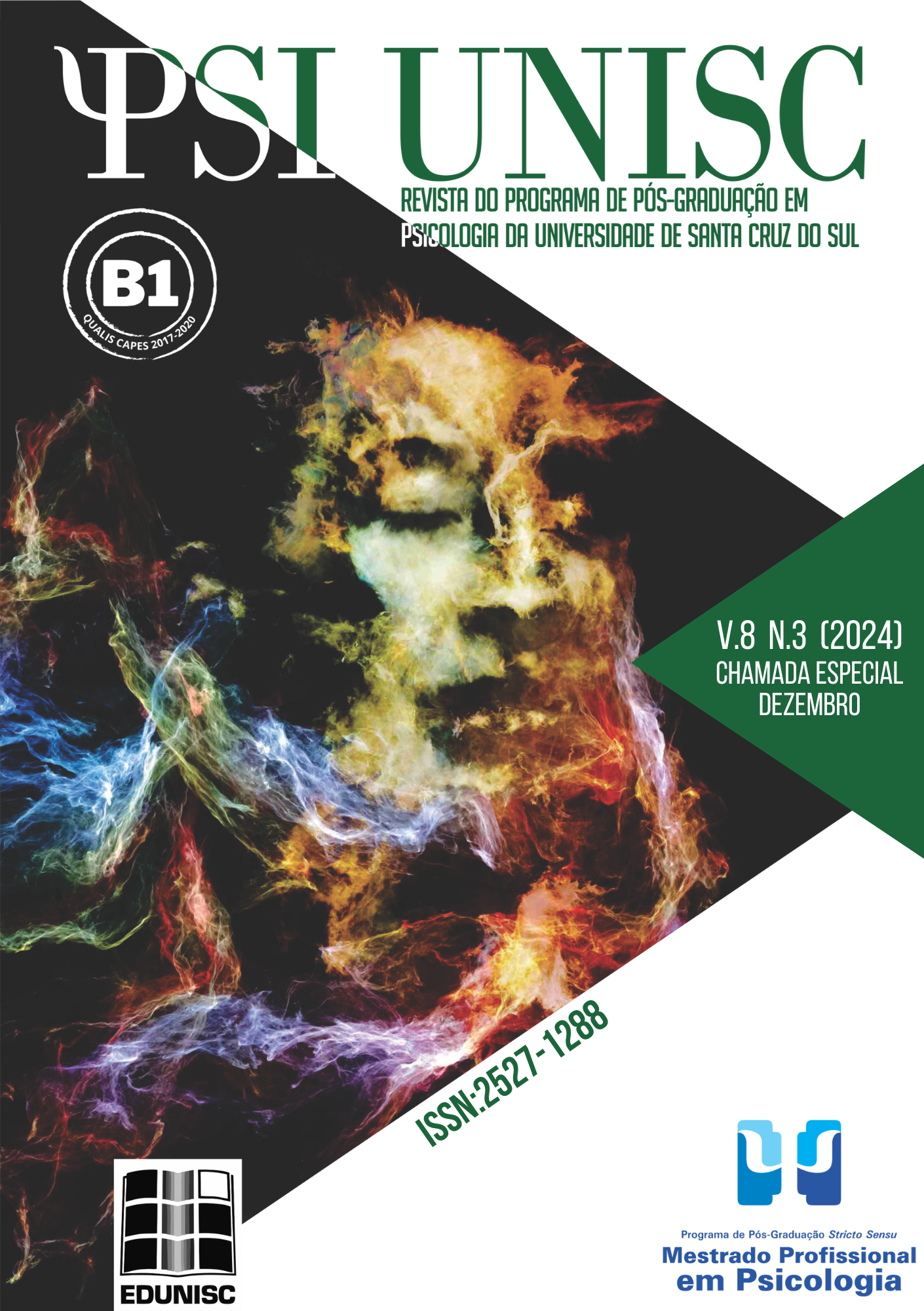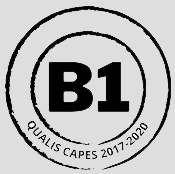Psychosocial support for indigenous people in disasters and public health emergencies
DOI:
https://doi.org/10.17058/psiunisc.v8i3.19970Keywords:
indigenous people, mental health in ethnic groups, emergencies, disasters, psychosocial interventionAbstract
With the increase in extreme events triggered by climate change, it is crucial to understand how public policies focused on responding to disasters and public health emergencies propose actions with specific populations within the affected territories. The aim of the current study is to present central categories for an appropriate approach to psychosocial support for indigenous peoples in disasters and public health emergencies. To this end, we conducted a critical analysis of the scientific and technical literature on the subject, integrating these findings to recommendations from public policies in force in Brazil. Moreover, we discussed these aspects together considering perspectives from internationally renowned indigenous leaders, as well as from our professional experiences with native communities and traditional peoples, and/or in the context of extreme events. Among the categories to be considered in the construction of psychosocial support strategies for indigenous populations affected by disasters and public health emergencies, the following were highlighted: Diversity of understandings about the phenomena; Intercultural communication; Respect for the elderly; Body-territory; Collective identity and processing of the potentially traumatic situation; The city is an indigenous territory; Respect for social organization; A science and a medicine of its own; Grief and the centrality of spirituality. Additionally, a summary of recommendations was made for managers and professionals of the Brazilian Psychosocial Care Network, aiming at promoting Buen Vivir in the context of extreme events, guaranteeing the principles of universality, integrality and equanimity, supported by the Unified Health System.
Downloads
References
Aleixo, E., Lima, A. D. S., & Aureliano, I. C. A. (2020). Mortes, invasões e garimpo em terras indígenas no estado de Roraima: Entre mobilizações étnicas e conflitos sociais. Vukápanavo: Revista Terena, 3, 13-36. https://bc955768-e713-4766-a0b4-e5cc895bf453.filesusr.com/ugd/4ef2f7_7043ed7f171a44c3aa72e1307d88ff4f.pdf
Articulação dos Povos Indígenas do Brasil (2020). Povos que perderam seus parentes. https://emergenciaindigena.apiboficial.org/dados_covid19/
Beltrão, J. F., Santos Lopes, R. C., Cunha, M. J. S., Nazaré Mastop-Lima, L., Domingues, W. C. L., & Tomé, T. P. F. (2015). Vida & morte entre povos indígenas. Espaço Ameríndio, 9(1), 206-206. https://doi.org/10.22456/ea.v9i1.54951
Brasil. (1988). Constituição da República Federativa do Brasil. https://www.planalto.gov.br/ccivil_03/Constituicao/Constituicao.htm
Castilho, M. W. V., & Castilho, E. W. V. (2023). O desafio da invisibilidade dos indígenas em contexto urbano. Confluências, 25(3), 120-140. https://doi.org/10.22409/conflu.v25i3.59956
Conselho Federal de Psicologia. (2022). Referências técnicas para atuação de psicólogas(os) junto aos povos indígenas. https://site.cfp.org.br/wp-content/uploads/2022/07/crepop_indigenas_web.pdf
Fundação Oswaldo Cruz. (2020). Povos indígenas no contexto da COVID-19. https://www.fiocruzbrasilia.fiocruz.br/wp-content/uploads/2020/05/cartilha_povos_indigenas.pdf
Guimarães, D. S. (2022). A tarefa histórica da Psicologia Indígena diante dos 60 anos da regulamentação da Psicologia no Brasil. Psicologia: Ciência e Profissão, 42, 1-14. https://doi.org/10.1590/1982-3703003263587
Ingold, T. (2019). Sobre levar os outros a sério. Editora Vozes.
Instituto Brasileiro de Geografia e Estatística. (07 de agosto, 2023). Brasil tem 1,7 milhão de indígenas e mais da metade deles vive na Amazônia Legal. https://agenciadenoticias.ibge.gov.br/agencia-noticias/2012-agencia-de-noticias/noticias/37565-brasil-tem-1-7-milhao-de-indigenas-e-mais-da-metade-deles-vive-na-amazonia-legal
Instituto Brasileiro de Geografia e Estatística. (10 de agosto, 2012). Censo 2010: população indígena é de 896,9 mil, tem 305 etnias e fala 274 idiomas. https://agenciadenoticias.ibge.gov.br/agencia-sala-de-imprensa/2013-agencia-de-noticias/releases/14262-asi-censo-2010-populacao-indigena-e-de-8969-mil-tem-305-etnias-e-fala-274-idiomas
Inter-Agency Standing Committee. (2007). IASC Guidelines on mental health and psychosocial support in emergency settings. IASC. https://interagencystandingcommittee.org/iasc-task-force-mental-health-and-psychosocial-support-emergency-settings/iasc-guidelines-mental-health-and-psychosocial-support-emergency-settings-2007
Kopenawa, D., & Albert, B. (2015). A queda do céu: Palavras de um xamã yanomami. Companhia das Letras.
Krenak, A. (2020). O amanhã não está à venda. Companhia das Letras.
Lacerda, L. F. (2020). Ecologia integral, justiça socioambiental e bem viver. Editora Leiria. http://www.casaleiria.com.br/acervo/follmann/ecologiaintegral/v2/176/index.html
Lacerda, L., & Freitas, C. M. (2024). Justiça socioambiental para gestão integral de riscos de desastres. Revista Em Pauta: Teoria Social E Realidade contemporânea, 22(55). https://doi.org/10.12957/rep.2024.79890
Lambert, S. J., & Scott, J. C. (2019). International disaster risk reduction strategies and Indigenous Peoples. The International Indigenous Policy Journal, 10(2), 1-21. https://doi.org/10.18584/iipj.2019.10.2.2
Langdon, E. J., & Wiik, F. B. (2010). Antropologia, saúde e doença: Uma introdução ao conceito de cultura aplicado às ciências da saúde. Revista Latino-Americana de Enfermagem, 18, 459-466. https://doi.org/10.1590/S0104-11692010000300023
Middleton, J., Cunsolo, A., Jones-Bitton, A., Wright, C. J., & Harper, S. L. (2020). Indigenous mental health in a changing climate: A systematic scoping review of the global literature. Environmental Research Letters, 15(5), 053001. https://doi.org/10.1088/1748-9326/ab68a9
Ministério da Saúde (2013). Política Nacional de Saúde Integral das Populações do Campo, da Floresta e das Águas. https://bvsms.saude.gov.br/bvs/publicacoes/politica_nacional_saude_populacoes_campo.pdf
Noal, D. S., & Rabelo, I. V. M. (2022). Desastres relacionados às mudanças climáticas e seus impactos na saúde mental. In Barcellos, C., Corvalán, C., & Silva, E. (Eds.), Mudanças Climáticas e seus impactos na saúde mental (pp. 117-134). Editora Fiocruz. https://doi.org/10.7476/9786557081679
Noal, D. S., Lacerda, L. F. B., Medeiros, C. P., Santos, R. A., Cardoso, Y. C., Coelho, L. G., & Schmidt, B. (2024). Psicologias indígenas em desastres: Construção de linhas de cuidado ao Bem-Viver de povos originários. Estudos de Psicologia (Campinas), 41, e230096. https://doi.org/10.1590/1982-0275202441e230096pt
Ramos, M. N. P. (2012). Comunicação em Saúde e Interculturalidade - Perspectivas Teóricas, Metodológicas e Práticas. Revista Eletrônica de Comunicação, Informação & Inovação em Saúde, 6(4), 1-19. https://doi.org/10.3395/reciis.v6i4.742
Richmond, C., Elliott, S. J., Matthews, R., & Elliott, B. (2005). The political ecology of health: Perceptions of environment, economy, health and well-being among ‘Namgis First Nation. Health & Place, 11(4), 349-365. https://doi.org/10.1016/j.healthplace.2004.04.003
Tuxá, I. (2022). Territorialidade e subjetividade: Um caminho de retomada do ser. In ABIPSI (Org.), Pintando a psicologia de jenipapo e urucum: Narrativas de indígenas psicólogos(as) do Brasil. (pp. 17-21). Editora Casa Leiria. http://www.guaritadigital.com.br/casaleiria/olma/pintandoapsicologia/6/index.html
United Nations Educational Scientific and Cultural Organization [UNDRR]. (2023). Disaster Risk Reduction. https://www.unesco.org/en/disaster-risk-reduction
United Nations. (2015). Sendai Framework for Disaster Risk Reduction 2015-2030. https://www.undrr.org/quick/11409
Downloads
Published
How to Cite
Issue
Section
License
The submission of originals to this journal implies the transfer, by the authors, of the printed and digital publication rights. The copyrights for the published articles are those of the author, with periodical rights on the first publication. Authors may only use the same results in other publications clearly indicating this journal as the medium of the original publication. Because we are an open access journal, we allow free use of articles in educational and scientific applications provided the source is cited under the Creative Commons CC-BY license.




